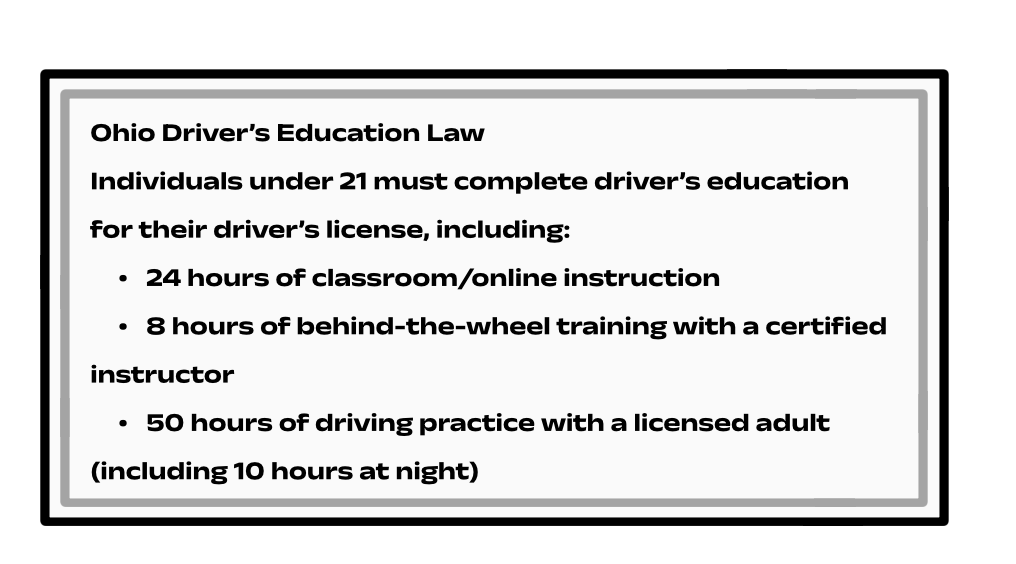Eshal Firoze | The Chronicle
Ohio’s new driving requirements are changing more than just the law- they’re changing the way young adults prepare to take their first steps towards independence. As of September 30, anyone under the age of 21 will be required to complete formal driver’s education to obtain a license.

Previously, only those under 18 had to go through this extensive process, and those who were older had the ability to bypass these demands. This change was made to improve road safety, particularly among the younger crowd. With drivers aged 16-24 contributing to a significant percentage of car accidents, this law aims to promote safer roads and produce more educated drivers.
Philip Koshy, a driving instructor at Jack’s Driving School, reflected on what he has seen in his three years of experience working with students in Mason. Koshy said that he observed many risks when people older than 18 were not required to get a full driving education.
“When I first started teaching, I wondered why 18 and 19-year-olds were exempt, just because [of] their age. People have a lot of misconceptions about driving. A lot of people think it’s just a matter of getting comfortable behind the wheel, and that’s it.” Koshy said.
Koshy said that a lack of experience can lead to gaps in learning and even cause casualties, and he predicts that this change will bring in an influx of students and hopefully change things for the better.
“I believe [the roads will] be safer, and I’m optimistic that [we will] see a decline in accidents and fatalities. But that remains to be seen,” Koshy said.
Sophomore Addy Young is one of many high school students eager to get their license, but behind the newfound independence lie nerves and apprehension that come with being a young driver.
“I get pretty nervous on the road, sometimes not just for me, but about other people too,” Young said. Young said she’s personally experienced the uneasiness of the switch from having a parent with her to being alone.
For new, inexperienced drivers like Young, this law brings a sense of reassurance while on the road.
“[I] feel safer knowing that there are more people who know what they’re doing, and that I drive around people who are educated about the laws of the road,” Young said. `
While many students see the benefits of this law, for other young drivers, formal education is an investment, and this policy adds a greater financial obligation for those aged 18-21 who now have to undergo this kind of education.
Several Mason High School (MHS) students who were attempting to avoid the financial undertaking by waiting until they were 18 will now have to change their plans. Kyra Jackson, a senior at MHS, is one of these students who had originally chosen to wait to avoid the expensive costs and simply take her test once she turned 18.
“I think it’s way too expensive, and I didn’t want to burden my family with the fees of a 600 to $900 driving school,” Jackson said.
Jackson also said that she believes that there are better measures that legislation could take to improve road safety.
“I believe [legislation] could have come up with many other ways to fix this issue, such as things like making people retake their tests every few years to retain knowledge,” Jackson said.
This law compromised Jackson’s attempts to save money, as she said she will now have to face the challenge of paying for driver’s education.
“I’m going to try my best to pay for some [driving school] and start putting money aside until I can somehow come up with enough money,” Jackson said.
Jackson said that even though she feels overlooked from a financial standpoint, she also recognizes the law’s attempts to target safety and eliminate added risks on the road.







